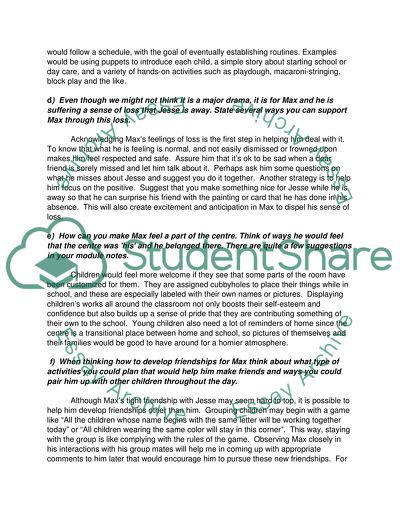Cite this document
(Meet Emotional Needs and Settle Children Assignment Example | Topics and Well Written Essays - 2250 words, n.d.)
Meet Emotional Needs and Settle Children Assignment Example | Topics and Well Written Essays - 2250 words. https://studentshare.org/psychology/1715780-children-in-childcare
Meet Emotional Needs and Settle Children Assignment Example | Topics and Well Written Essays - 2250 words. https://studentshare.org/psychology/1715780-children-in-childcare
(Meet Emotional Needs and Settle Children Assignment Example | Topics and Well Written Essays - 2250 Words)
Meet Emotional Needs and Settle Children Assignment Example | Topics and Well Written Essays - 2250 Words. https://studentshare.org/psychology/1715780-children-in-childcare.
Meet Emotional Needs and Settle Children Assignment Example | Topics and Well Written Essays - 2250 Words. https://studentshare.org/psychology/1715780-children-in-childcare.
“Meet Emotional Needs and Settle Children Assignment Example | Topics and Well Written Essays - 2250 Words”. https://studentshare.org/psychology/1715780-children-in-childcare.


